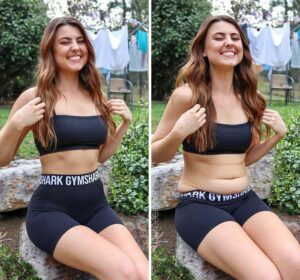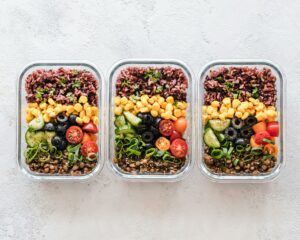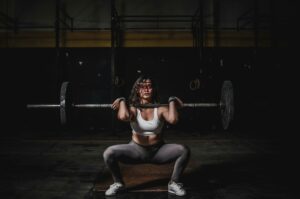Society bombards us with images of idealized bodies: chiseled abs, impossible proportions, and airbrushed perfection. These unrealistic portrayals, far removed from the natural human form, have a profound and detrimental impact on our mental health. Heavily edited images seen in magazines, social media, television, and advertising relentlessly showcase bodies that are often unattainable through natural means and are part of the source of what’s wrong in today’s media. Maybe even in the world’s “all-time” media.

Unrealistic Body Standards = A Recipe for Misery
These “far-reaching” body standards often create a constant state of comparison, breeding feelings of inadequacy and low self-esteem. We compare our bodies to these manipulated images, leading to a distorted perception of what constitutes a “normal” and healthy physique. This relentless pursuit of an unattainable ideal fuels anxiety, depression, and body dysmorphic disorder.
Unrealistic body standards are typically portrayed as a single, narrow ideal: the impossibly thin model on a runway, the chiseled actor with a six-pack. These images are rarely a true reflection of the average human body, often achieved through extreme dieting, rigorous exercise routines, and the magic of photo editing. The constant comparison to these fabricated ideals fuels feelings of inadequacy and shame, creating a disconnect between our natural bodies and the perceived ideal.

This disconnect has a profound impact on mental health. Studies have shown a direct link between exposure to unrealistic body standards and increased rates of:
-
Body dissatisfaction: The constant comparison leads individuals to be hypercritical of their bodies, fostering feelings of low self-esteem and shame.
-
Eating disorders: The pursuit of an unrealistic ideal often leads to unhealthy eating habits, triggering the development of anorexia nervosa, bulimia nervosa, and other eating disorders.
-
Depression and anxiety: The relentless pressure to achieve an unattainable body image can lead to significant anxiety and depression, impacting overall well-being.
-
Low self-worth: When individuals feel they don’t measure up to the unrealistic standards, their self-worth plummets, leading to feelings of isolation and despair.
The Cycle of Unhealthy Behaviors
The pressure to conform to these standards often drives individuals to engage in harmful behaviors. Crash diets, excessive exercise, and even resorting to dangerous measures like plastic surgery become desperate attempts to achieve the “perfect” body. This obsession with appearance disrupts healthy relationships with food and exercise, leading to a decline in overall physical and mental well-being.


Embracing Realistic Body Standards
Instead of chasing a mirage, chase a better you! We must embrace a more realistic and inclusive definition of beauty. This means celebrating the diversity of human bodies, and recognizing that size, shape, and ethnicity all contribute to our unique beauty.
Shifting the focus towards health and well-being, rather than striving for an unattainable physique, is crucial. Promoting self-acceptance and appreciating our bodies for what they are – strong, capable, and resilient – is vital for fostering positive mental health.
Breaking the Cycle
Here’s how we can break free from the shackles of unrealistic body standards:
-
Media Literacy: Be critical of the images you consume. Recognize the manipulation and editing used to create the illusion of “perfection.”
-
Body Positivity Movement: Support and engage with movements that promote self-acceptance and celebrate diverse body types.
-
Focus on Health: Prioritize healthy eating habits, regular exercise, and activities that make you feel good, both physically and mentally.
-
Seek Help: If you’re struggling with body image issues, don’t hesitate to seek professional help from therapists or counselors specializing in body dysmorphic disorder and eating disorders.







